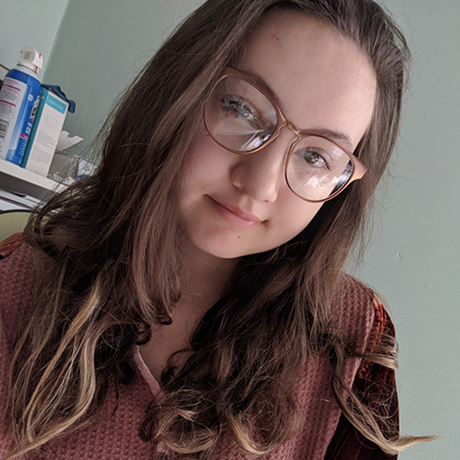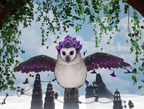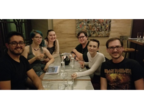Cui Cui
Cui Cui is a third person adventure puzzle platformer in which the player assumes the feathery role of Cui. Small but not helpless, Cui must solve a series of extraordinary puzzles to help those around her while avoiding the harmful rays of light that threaten all life. ...learn more
Project status: Under Development
Groups
2020 Intel University Games Showcase
Intel Technologies
Intel CPU
Overview / Usage
Project Overview -
Cui Cui is a third person adventure platformer in which the player assumes the feathery role of Cui, a tiny, benign bird who seeks to save the world from an abrupt and total heat collapse caused by greed and infatuation. Small but not helpless, Cui must solve a series of extraordinary puzzles to help those around her while avoiding the harmful rays of light that threaten all life.
Features -
Cui Cui is is game about solving puzzles based on dynamic uses of light and shadow, and unique movement born through using light as a hazard and emphasis on teamwork. Cui Cui demonstrates an expressive narrative through environmental storytelling.
Team -
Felix Faeh - Design Lead
Kenny Guayaguil - Tech Lead
Abby Johnson - Art Lead
Sam Hall - Character Artist
Liz Davis - Environment Artist
Michael Marangoni - Environment Artist
With additional outsourcing from SCAD students and Alumni for Animation, Sound, Particles and Illustrations.
Methodology / Approach
General Methodology
Cui Cui is a senior project made by six students of the Savannah College of Art and Design over a period of 6 months.
Light Mechanic
One of the more unique design aspects we hoped to tackle was that light would become a constant and growing danger for the player. As such, we needed to find solutions to redirect the player away from it, while also maintaining visibility helping them navigate through the level. Normally in games, lighting is used to guide the player and create points of interest in the environment, but in our case, we had to make adjustments. Instead, we used scene compositions with lead in lines, color glyphs and brief, controlled camera movements.
Flying
As a bird, the player navigates through the game by flying. However, Cui is still a small bird and has limited stamina. As you fly or take damage, the stamina depletes while resting in shade will quickly refill it. The purpose behind this choice was to tie in the player’s survivability in the light with their ability to fly elegantly. We were aiming to create a symbolic correlation between these, tying in the willpower to face danger and the strength to keep moving onwards and upwards.
General Code
The functionality of the game is based on blueprinting from Unreal Engine 4. This has allowed us to easily prototype and iterate between many different design ideas. Although blueprinting has its limitations, we have followed a structure and a communication system that is commonly used in games with conventional scripting. For the protagonist, the movement functionality had to be redone from near zero because we needed to have specific control over how Cui would move while walking, flying, and swimming. We started by creating a custom gravity system and developing custom macros to replace built-in functions of the engine to better suit our needs. This has demonstrated that even with limited manpower directed towards programming, our team can achieve success beyond our initial expectations.
Artificial Intelligence
The AI is divided between two characters: the friendly Buddy Birds and the antagonistic Azhar. The Buddy Birds are capable of autonomous movement, with some preferring to walk while others prefer to fly around and visit new areas. Regardless of their movement patterns, they are all able to listen to Cui's singing and respond by flocking together to traverse lit areas and overcome physical barriers. Azhar, like the other AI, can switch between walking and flying. Azhar defaults to patrolling certain areas, but will chase the player once detected and attack once within proximity.
Agile and Lists
When we started this project, none of us were familiar with the agile workflow and it took a few sprints to really get it down. We set up our sprints on Google Sheets and met daily to go over progress. In addition to sprint sheets, we had model lists detailing every model, the member assigned to it, and the current status: Not Started, In Progress, Awaiting UVs, Awaited Textures, Completed, In Engine. This assured that we could keep watch on the status of all assets and prevented any redundant work. If anything needed to be revisited or handed off, detailed notes were kept directly next to the relevant asset.
Source Control
A major part of our workflow that increased our productivity and ability to work independently was our use of Perforce for source control. Seven weeks into production we established a server and have been using it since. Perforce has greatly streamlined our workflow, allowing us insight into a professional pipeline and enabling each part of our team to work unhindered at any given point of time. It has been a learning curve, with a few incidents of work being overwritten or updated incorrectly, but we are now confident in our ability to use this system.
Team Dynamic
One of the best things about making Cui Cui is that our team has become life-long friends. At the beginning of the project we were little more than passing acquaintances. Over the course of development, we have become very close and it has had a highly positive effect on our workflow. We know each others' quirks and skill levels and never felt the need to question each others authority. That we could work as teammates and hang out as friends helped develop our bond and shared devotion to making Cui Cui great.
Outsourcing
A great strength of our team was our outsourcing. While our core team featured six people with a wide variety of backgrounds and skills, we still had some gaps that needed to be filled. Over the course of development, we had a total of 18 people working to fill those gaps, most of whom came from outside the Game Development major. These fellow students and Alumni work in animation, sound design, and illustration fields. The full list of contributors and their contributions can be found here.
Technologies Used
Engine - Unreal Engine 4
3D Programs - Maya, Zbrush, Houdini, and SpeedTree
Art - Topogun, Substance Painter, Substance Designer, Photoshop, and Illustrator
Source Control - Perforce
Editing - Premiere
Other links
Collaborators
There are no people to show.


























